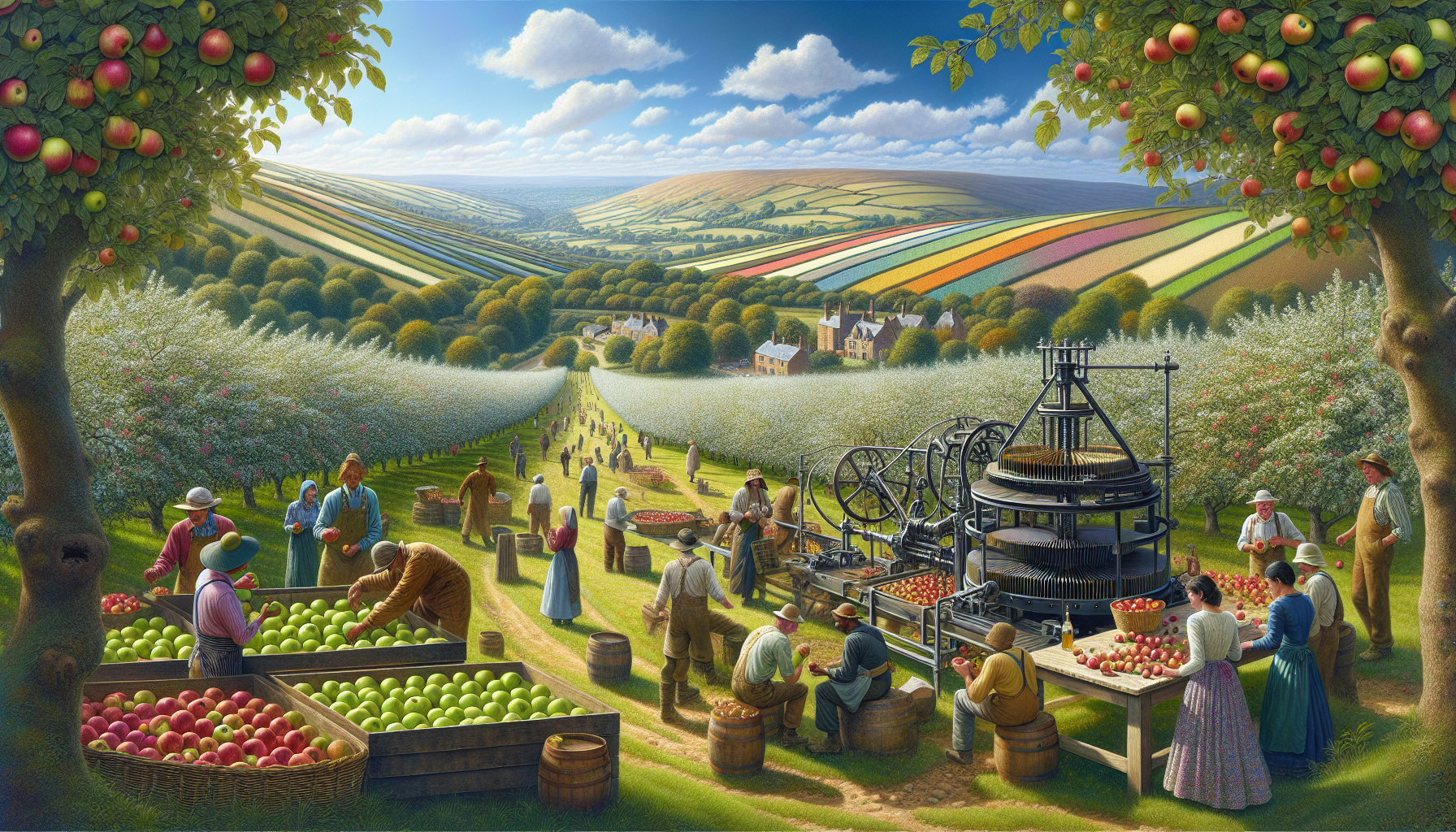Apple Farming in Britain
Apple farming holds a significant place in Britain’s history, culture, and economy. With hundreds of apple varieties flourishing across the country, it’s no surprise that Britain is a hub for apple enthusiasts! In this guide, we delve into the beautiful and complex world of apple farming in Britain, from its history to the innovative techniques and trends shaping its future.
Meta Description
Discover the richness and diversity of apple farming in Britain. Through exploring apple varieties, farming techniques, and market trends, we reveal why Britain is a key player in the global apple sector. Welcome to your essential guide to ‘Apples’ and apple farming!
Introduction to Apple Farming
Did you know Britain boasts of over 2,500 apple varieties? The boyhood discovery of a single apple tree by a Norfolk farmer around 1800, gave birth to the Bramley Apple, Britain’s beloved culinary variety. Fast forward to today, apples contribute significantly to Britain’s rural economy and landscape, demonstrating the marriage of agriculture and culture.
The Diverse World of British Apples
Whether you’re sinking your teeth into a crisp ‘Cox’s Orange Pippin’ or baking a pie with ‘Egremont Russet’, British apples are a testament to the island’s horticultural diversity. Each variety, be it traditional like ‘Blenheim Orange’ or modern like ‘Jazz’, brings unique flavor profiles and uses. The nuanced cultivation across different regions further augments this diversity.
Essential Cultivation Techniques for Successful Apple Farming
Apple farming necessitates meticulous care from soil preparation to harvesting. Fertile soil, proper spacing and pruning, effective pest and disease management are crucial for a healthy orchard. The right balance of these techniques ensures optimal apple growth and production, thereby fostering successful apple farming.
The Impact of Climate on Apple Farming
Britain’s temperate maritime climate is a boon for apple farming, providing the right blend of warmth, calm and moisture for the trees. Yet, variations in seasons can impact fruit yield and quality. Embracing adaptive strategies such as frost protection, irrigation, and new apple varieties tolerant to climate change, is crucial for modern apple farming.
Harvesting and Post-Harvest Practices
From recognizing the signs of maturity to employing careful picking techniques, harvesting apples requires keen observation and gentleness. Post-harvest, the apples need proper storage conditions to stay fresh and delicious. Each apple variety has specific storage requirements, directly impacting its shelf life and quality.
Market Trends and Economic Opportunities in Apple Farming
British apples enjoy strong market trends, driven by increasing consumer preference for local and organic produce. This evolving landscape offers opportunities to diversify with value-added products and direct sales. Optimal utilization of these trends can chart a profitable course for apple farmers.
Challenges in Apple Farming and Solutions
Despite its allure, apple farming faces challenges like pest attacks and evolving climatic conditions. Innovative solutions, like revamped pest control techniques, digital farming aids, and sustainable practices, can help tackle these hurdles. These solutions not only enhance apple farming but also pave the way for environmentally-friendly farming practices.
Conclusion: Embracing the Future of Apple Farming
As we conclude our journey through British apple farming, the resilient apple stands as a testament to Britain’s farming heritage and potential. Whether you’re an aspiring farmer, curious consumer, or passionate about sustainable practices, there’s plenty to explore and experience in this world of apples. Let’s take a bite and savor the richness of apple farming in Britain!
Semantic Keywords Related to “Apples”
Orchard management, Apple varieties, Organic apple farming, Apple picking, Pest control techniques, Climate impact on apples, Harvesting methods, Agricultural practices, Fruit quality management, Sustainable agriculture, Seasonal farming, Farmland diversity, Economic trends in agriculture, Direct-to-consumer sales, Cider production, Horticultural practices, Soil health, Mulching techniques, Fertilization strategies, Crop rotation, Pest-resistant apple varieties, Local food systems, Value-added agriculture, Apple festivals, Britains’ climate zones, Apple tree pruning, Digital farming solutions, Environmentally friendly pesticides, Crop yield forecasting, Community supported agriculture (CSA), Apple marketing strategies, Agricultural sustainability, Innovative farming technologies, Regional apple farming, Biodiversity in orchards, Farm soil composition, Apple nutrition, Farming equipment for apples, Apple research and development, Varietal differences, Competing in the apple market, Custom apple products, Farm-to-table initiatives, Farm business planning, Permaculture in apple farming, Educational programs for farmers, Fruit tree grafting techniques, Apple preservation methods, Cold storage facilities, Cider apple varieties






